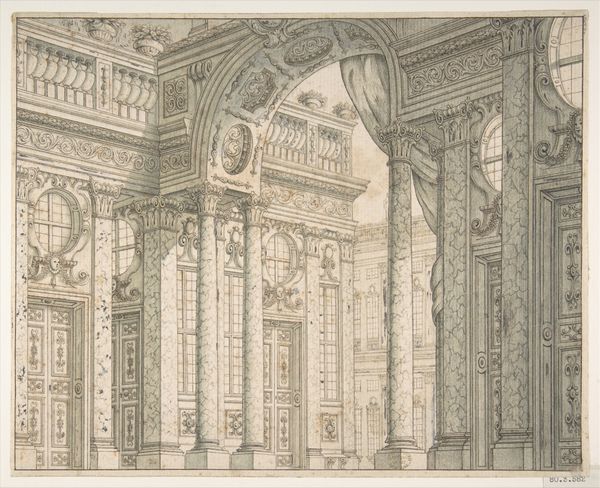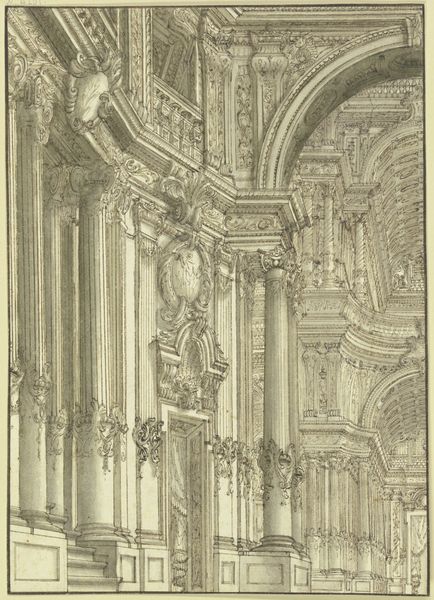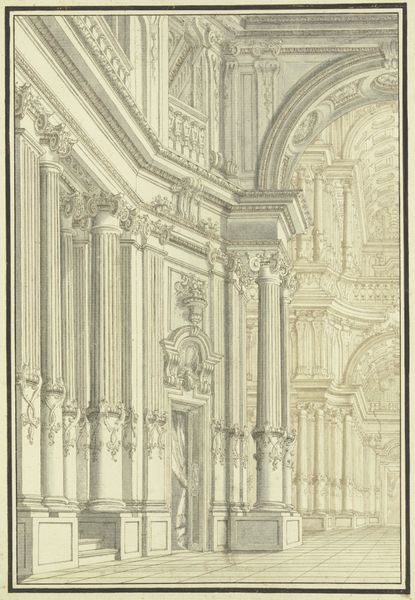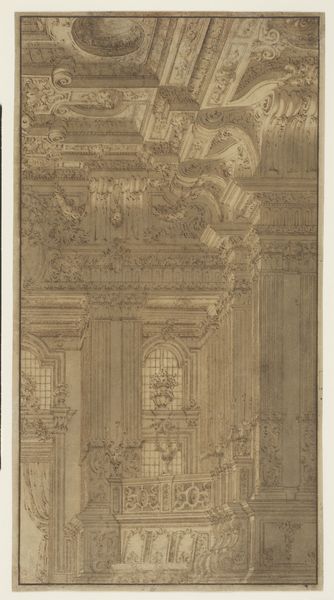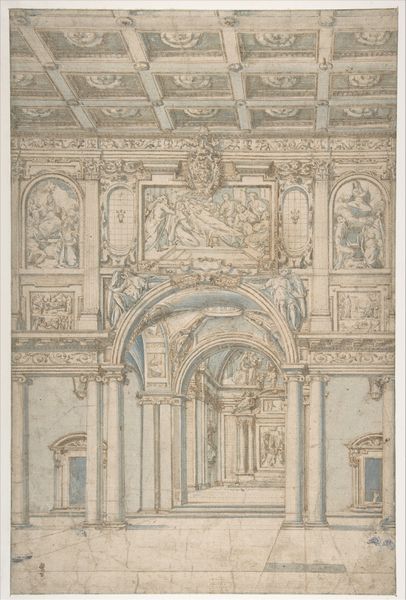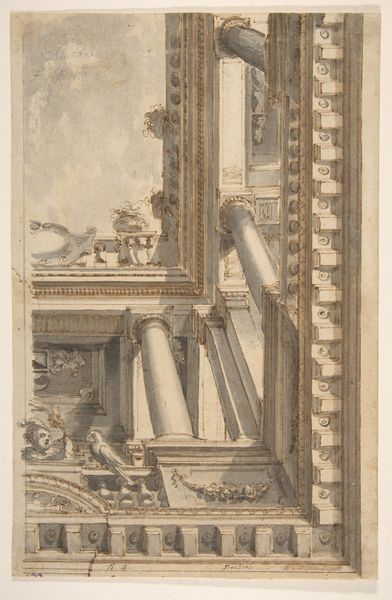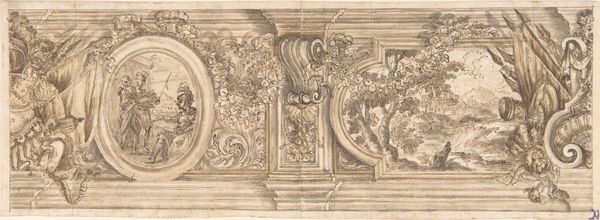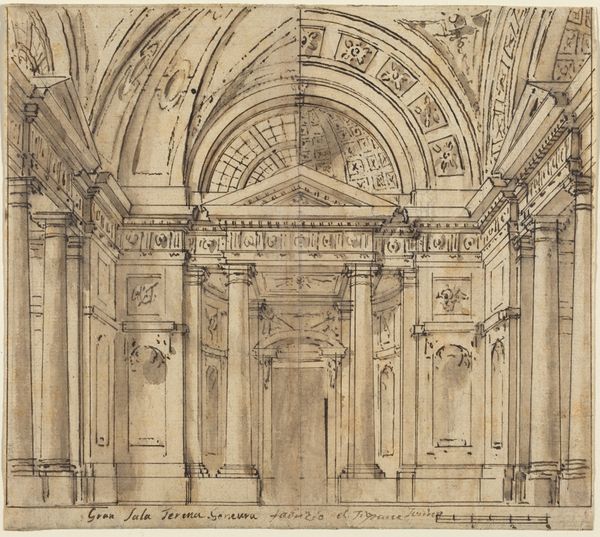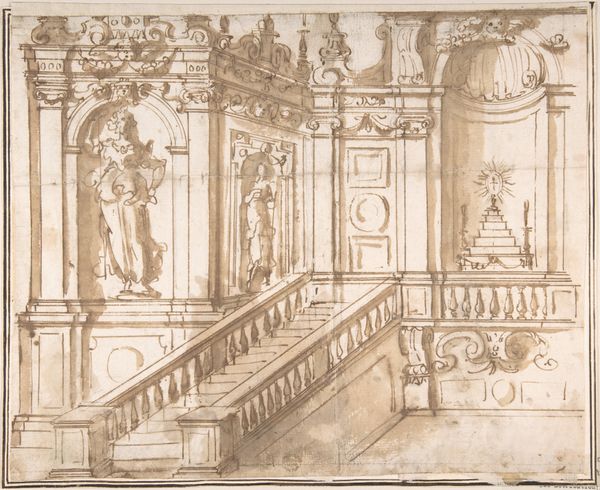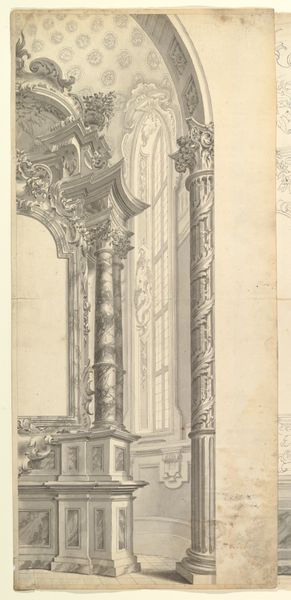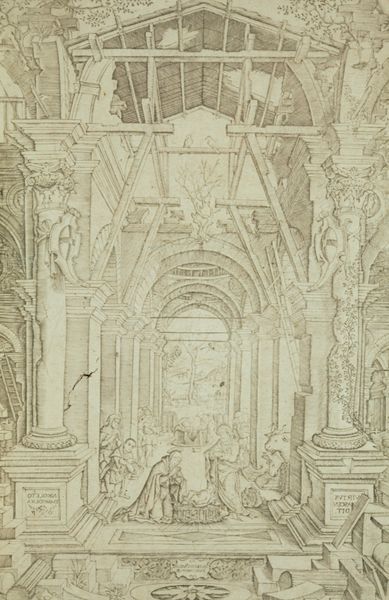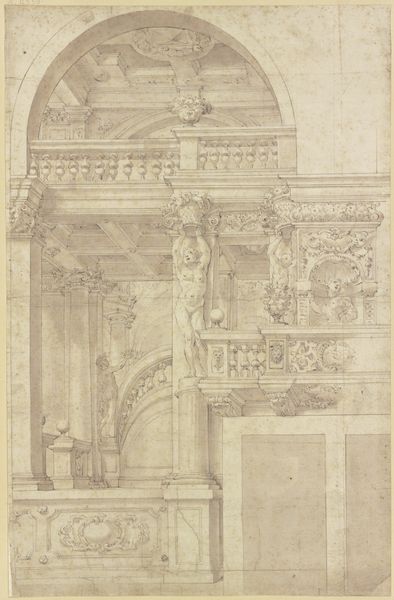
drawing, etching, architecture
#
drawing
#
baroque
#
etching
#
etching
#
architecture
Copyright: Public Domain
Curator: Welcome. We are standing before "Halle mit gewundenen Säulen", held here at the Städel Museum. It's an etching, showcasing Giacomo Antonio Mannini's architectural prowess. Editor: My goodness, what a dizzying perspective. The columns seem to twist into infinity. I’m struck by the sheer density of line and detail. It's quite overwhelming, actually. Curator: Indeed. Notice how the repetitive spiraling fluting creates an almost hypnotic effect. Mannini uses line weight masterfully to define space and shadow, directing our gaze upward toward the implied vault. Editor: I wonder about the labour involved in creating this illusion. Etchings require careful planning and repetitive actions. What social stratum produced Mannini, and for whom was he producing these images? Was this strictly a decorative print for elite collectors or something more akin to architectural blueprints circulating amongst skilled craftspeople? Curator: An insightful point. As an etching, it implies multiple reproductions. It allows us to appreciate not just the architectural vision, but also the network of production, and dissemination of ideas inherent in printmaking at that time. The Baroque was an aesthetic designed to impress, even overwhelm—but the scale is belied by the materials themselves. Etching flattens dimension even as it feigns depth. Editor: I find myself also considering the implied tactile experience. Though represented in print, I am thinking about stone and plaster dust covering workers hands, the grit of these enormous baroque projects, and their construction using fairly rudimentary tools by a largely anonymous labour force. Curator: A compelling alternative view. You've masterfully interwoven material and social threads, bringing texture into a drawing that flattens the haptic sense in favor of idealized spatial relationships. Editor: Precisely! We have examined it and considered process. Curator: An intriguing discussion! This image and the questions surrounding its construction and audience reflect a deep investigation of materials, processes, and socioeconomic considerations. Thank you for expanding the range of possible engagements with the piece.
Comments
No comments
Be the first to comment and join the conversation on the ultimate creative platform.
